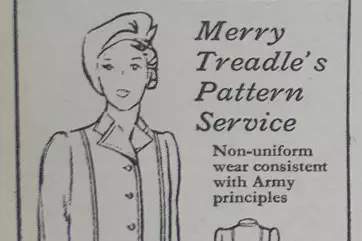International Heritage Centre blog
Merry Treadle: The ‘War Cry’ Pattern Service
Merry Treadle: The ‘War Cry’ Pattern Service
To many people who make their own clothes, the month of May is known as Me-Made May, an initiative started in 2010 by sustainable sewing blogger and author Zoe Edwards. One of the aims of Me-Made May is to encourage makers to think about the meaning and motivation behind their handmade clothing. This inspired us to take a closer look at a little-known Salvation Army venture into the world of home dressmaking.
The Salvation Army has always made a close connection between the message of spiritual salvation and the medium of dress. Since the 1870s, members have been asked to declare their commitment and their faith by wearing a uniform, which remains one of the most distinctive and recognisable features of The Salvation Army to this day. The first edition of the Orders and Regulations for Field Officers in 1886 declared “If it is right to preach Salvation with the tongue […] it must be right to preach it by the clothes. […] The Salvationist in uniform goes out into all that world in which he lives and preaches by his dress Salvation to everyone who sees him.”
As we explored in our July 2021 blog post, Dedicated Followers: Uniforms and the Nineteenth-Century Salvation Army’s Attitudes to Fashion, the uniform was originally devised to serve a specific set of practical and symbolic functions, but its forms, functions and cultural meanings have all evolved gradually over time. Nonetheless, one thing the uniform has always done is provide Salvationists with the reassurance and convenience of a tailor-made form of dress that is guaranteed to be in keeping with their religious beliefs and moral principles.
However, for as long as uniform wearing has been encouraged by The Salvation Army, it has equally long been recognised that the uniform is not suitable for all occasions. For instance, since 1886, the Orders and Regulations have made provision for soldiers to wear a more subtle symbol of membership, such as a badge or ribbon, while at their daily employment. Yet, being out of uniform did not excuse Salvationists from their responsibility to exemplify Salvation by their dress. Soldiers were expected to abandon ‘all worldly finery’, which in 1886 was defined as ‘gold and silver ornaments, flowers, feathers and fashionably-cut apparel’.
That expectation remained long into the twentieth century, but as the century went on and fashions changed ever more rapidly, The Salvation Army’s guidance on what was and wasn’t appropriate lagged behind, sometimes leaving Salvationists in doubt about what to wear. One solution, endorsed by the clothes hanger below, was to ‘Buy Everything for Wear from Salvationist Publishing & Supplies’. For most of the twentieth century, The Salvation Army’s trade department (known as Salvationist Publishing & Supplies since 1917) sold not just uniform but a wide array of everyday clothing for Salvationists from its central London department store and mail order warehouse.
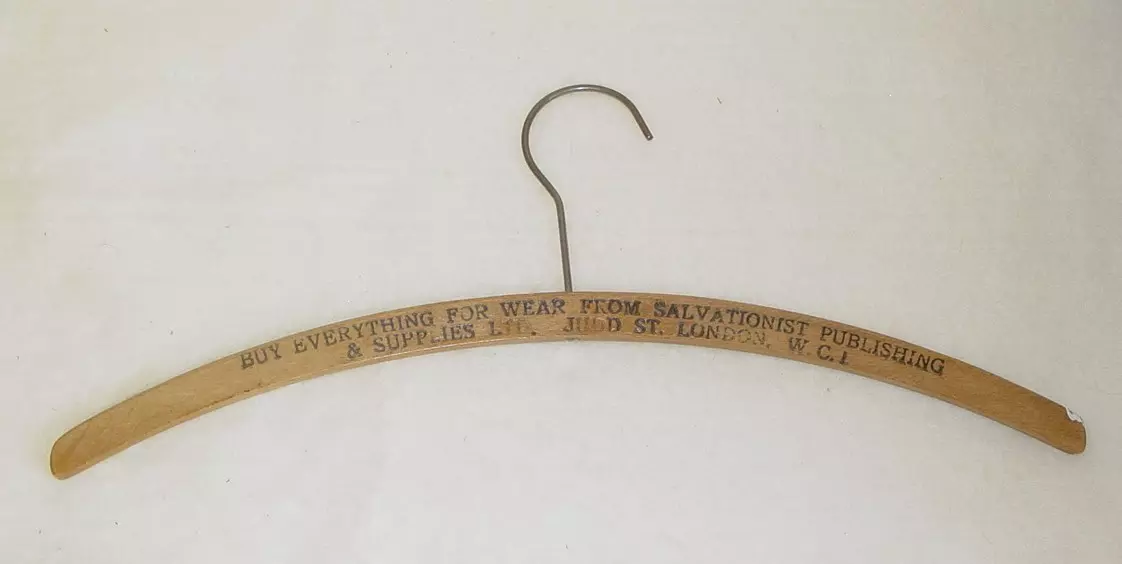
However, in 1940 The Salvation Army recognised that there was a group within its membership whose needs it wasn’t catering for: ‘young women [who] make their clothes for every-day wear’. According to The War Cry, their numbers had recently increased due to ‘the restriction on activity away from home in the evenings [which] is turning the thoughts of many towards home dressmaking’. This is a curiously oblique reference to the war considering it is printed next to an open call for knitted comforts for the troops and a column of advice about butter rationing (and one that is reminiscent of the early days of the coronavirus pandemic, when many took up new home-based hobbies like sewing). In order to satisfy this growing demand, The Salvation Army hired an expert dressmaker and launched the Merry Treadle, ‘A pattern service for “War Cry” readers’. The name refers to sewing machines powered by a foot pedal called the 'treadle' which were in common use at this time.
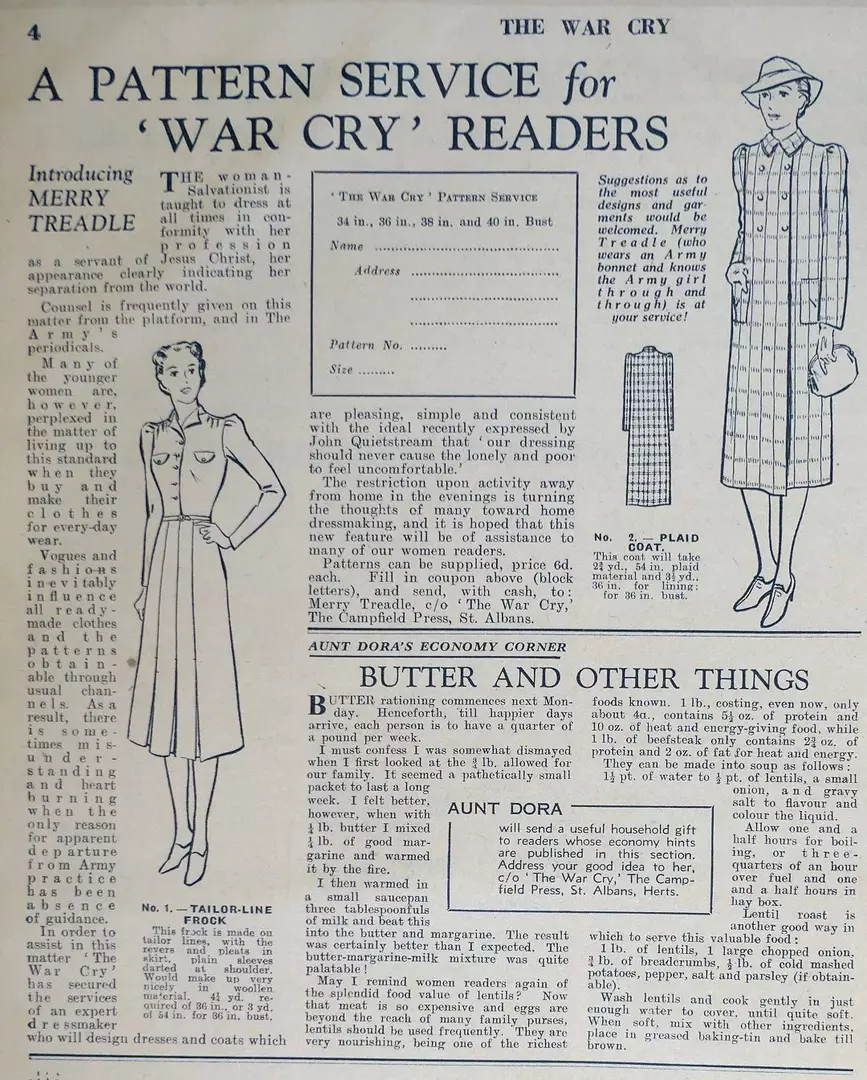
The expert dressmaker (unfortunately never named) was tasked with designing ‘dresses and coats which are pleasing, simple and consistent with the ideal that […] “our dressing should never cause the lonely and the poor to feel uncomfortable.”’ ‘Vogues and fashions’, it was said, ‘inevitably influence […] the patterns obtainable through the usual channels’, while the woman Salvationist’s appearance should clearly set her apart from the secular world and its fashions. Appropriately for a service launched in the winter months, Merry Treadle’s first offerings were a tailor-line frock which ‘would make up very nicely in woollen material’ and a plaid coat. There were only four sizes available per pattern. The standard range was from a 34 to a 40-inch bust. However, one pattern—the tellingly named ‘Matron’s dress’—offered larger stock sizes of 38 to 44 inches. Sold by mail order and priced at just sixpence each at a time when commercial patterns usually cost over a shilling (plus purchase tax from October 1940), Merry Treadle patterns lived up to their aim of helping those ‘who wish to dress simply and inexpensively’.
In total, 35 Merry Treadle patterns were released in just over a year and a half. The types of garments went beyond just the dresses and coats originally promised, but only so far. There were 16 dresses or frocks and six coats, but also six blouses, three skirts, two ‘overalls’ (a type of overcoat rather than the boilersuit we would generally think of today), one ‘smock’ (another type of overcoat), and a (skirt) suit. Despite the increasing acceptance of trouser wearing by women workers (including by Princess Elizabeth, the future Queen) during the Second World War, trousers are notably absent from the Merry Treadle collection—perhaps viewed as a ‘vogue’.
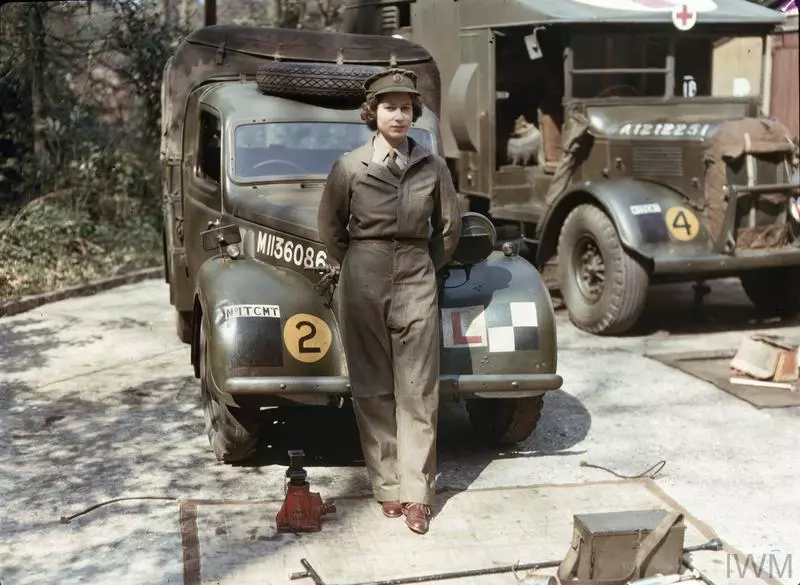
Unfortunately, there is little information surviving in our collection that gives insight into the reception of the Merry Treadle patterns. One letter of appreciation was printed in The War Cry during Merry Treadle’s run, and in April 1941, a companion article, ‘Merry Treadle’s Sewing Hints’, noted that ‘Merry Treadle … has been almost snowed under by requests for her recent overall and smock patterns’ (nos 29 and 30). However, nothing more concrete than these anecdotal examples has been found. Although we hold the Finance Council minute books of The Salvation Army’s printing works, The Campfield Press, from this period, they don’t contain sales figures for Merry Treadle or any discussion of the pattern service at all.
What the minutes do discuss in considerable detail, though, is how paper rationing led to the reduction of The War Cry from 16 pages to 12, then eight, then finally four (just two sheets) in November 1941. On 1 June 1941 clothing rationing was also introduced. Dressmaking fabric was rationed as well as ready-made clothes, and an ethos of ‘make-do and mend’, rather than making or buying new, began to be encouraged by the now-emblematic government-backed campaign. These factors seem to have spelled the end for The War Cry’s paper pattern service. The last Merry Treadle pattern, no. 35—a blouse, was released on 23 August 1941.
Sadly, I haven’t been able to track down any surviving examples of Merry Treadle patterns. We don’t hold any in our collection, and none appear in the Commercial Pattern Archive, an excellent aggregated catalogue of sewing patterns held by a number of institutions which is hosted by the University of Rhode Island. The V&A’s Art and Design Archives (not on the Commercial Pattern Archive) include some extensive sewing pattern collections but I’ve yet to check these because the archives are currently closed to researchers until 2024. However, we do have all of the Merry Treadle fashion illustrations (or should that be fashionless illustrations?) that were published in The War Cry. We’ve compiled these into a booklet available to download below. If any sewer or pattern drafter is inspired to try and recreate one, do tag us on social media (@salvarmyarchive)!
Ruth
May 2022
Read other blogs from the Heritage Centre
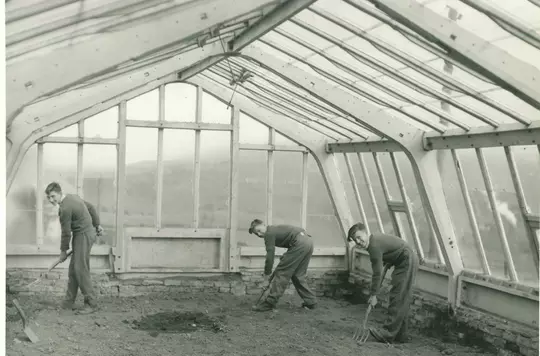
A garden lover's gem
This month’s blog ties in with #GreenWeek which takes place between 24 September and 2 October, raising awareness of issues associated with climate change and celebrating community action to protect the environment.
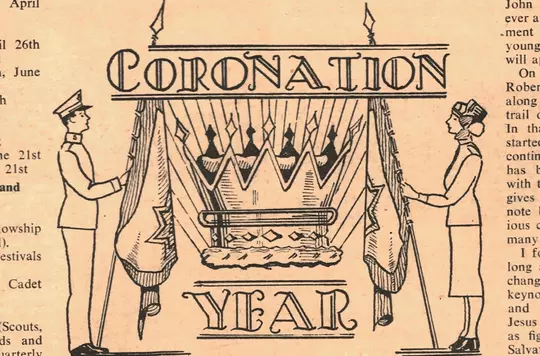
God Save The Queen!
Inspired by the platinum jubilee we bring you a potted history of Queen Elizabeth II’s relationship with The Salvation Army through the lens of our archives.
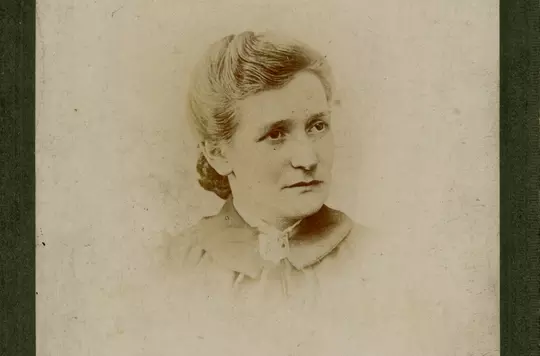
Guest blog: Honor Salthouse, 'The Oldest Soldier in the World'
Winette Field, Librarian of William Booth College, returns for another guest blog relaying the findings of a collaborative research project into the life of The Salvation Army's 'oldest soldier', Honor Salthouse.
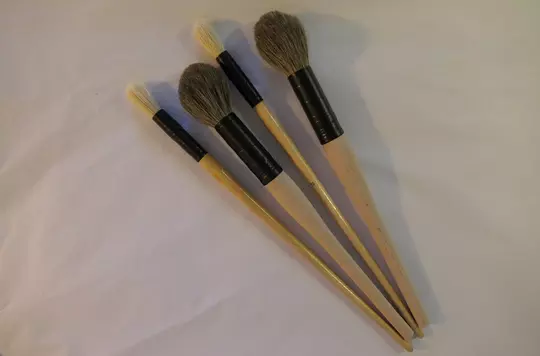
Collections Care at The Salvation Army International Heritage Centre during COVID-19
Read about what The Salvation Army Heritage Centre team has been up to behind the scenes throughout the COVID-19 pandemic.
